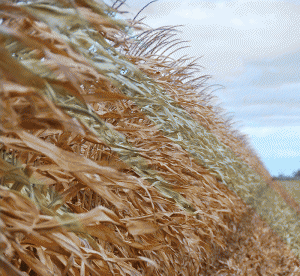GFO Newsletter for October 2016
GET THE LATEST NEWS FROM GRAIN FARMERS OF ONTARIO
ONTARIO PROVINCIAL PREMISES REGISTRY
Accurate and up-to-date premises identification is critical to the strength of Ontario’s agriculture and food sectors. Since 2008, the Provincial Premises Registry (PPR) has registered more than 39,000 parcels of land across Ontario. The integrity of the PPR depends on accurate and current premises information. By updating your information annually or as activities change on your premises, you are helping to protect your business in the event of an agri-food incident. Outbreaks and recalls can be time consuming and costly. With valid information from the PPR, the government can notify you quickly and determine which premises are involved in an incident, which can minimize the effect of an incident on your operation.
Being able to trace your product through the supply chain is what retailers are demanding. By keeping your registration information current, you are creating a competitive market advantage for your product. Updating your premises information is just as easy and free as the first time you registered.
Go online to www.ontarioppr.ca and click on “Update Registration” under “Register your Premises” on the main menu. You can also call Angus GeoSolutions Inc. (AGSI is the official Registrar of the Ontario PPR), at 1-855-697-7743 to register or update your information. •
ANNUAL DISTRICT MEETINGS
Grain Farmers of Ontario is beginning to plan for the 2016 January District Grain Committee Meetings. Be sure to check our website, www.gfo.ca, for updates to the date and location of your district’s meeting. Details will also be published in the GFO Newsletter in upcoming issues of the Ontario Grain Farmer magazine as they are finalized.
The Annual District Meetings are called to elect voting delegates and directors for the coming year. Updates on the organization and grain industry issues are also provided at these meetings. All barley, corn, oat, soybean, and wheat producers are welcome and encouraged to attend. •
GRAIN FARMERS OF ONTARIO ANNUAL REPORT
If you were unable to make it to Grain Farmers of Ontario’s Annual General Meeting in September, the Annual Report is available online at www.gfo.ca or by calling the office at
1-800-265-0550 and requesting a copy be mailed to you. The financial statements are included within the following pages of this GFO Newsletter for your convenience. •
ECONOMIC IMPACT STUDY
Grain Farmers of Ontario is seeking participants for a study on the economic impact of new regulations for neonicotinoid seed treatments in Ontario. The study will be conducted by the advisory firm BDO.
On July 1, 2015, new regulatory requirements for the sale and use of neonicotinoid treated corn and soybean seeds came into effect in Ontario and will be phased in over a period of time. In denying Grain Farmers of Ontario’s request for appeal, the Ontario Superior Court acknowledged that the new regulations would create financial hardship for grain farmers and produce a detrimental economic impact for Ontario’s agricultural economy.
This study will assess the economic impact of the new regulations by surveying Ontario grain farmers over three years. This survey of farmers will be the primary method of data collection. Engaging a significant number of participants is essential to secure the information needed to assess the impact of the new regulations on Ontario’s agricultural economy.
Participants must be corn or soybean farmers in Ontario. In addition to this survey, participants agree to complete a similar survey on their farming practices, production, and costs at the end of each growing season in 2017 and 2018. Participants may be contacted if their responses are incomplete or require clarification.
Look for the survey and more details in the November issue of Ontario Grain Farmer. •
MARKET COMMENTARY
by Philip Shaw
The September 12 United States Department of Agriculture (USDA) report raised U.S. national soybean yield to 50.6 bushels/acre putting production at 4.201 billion bushels. These numbers were above trade expectations. The USDA on the same day actually dropped U.S. national corn yield down to 174.4 bushels/acre for a crop size of 15.093 billion bushels. These numbers added to the general bearishness in grain markets.
Rains came to most Ontario parched crops in August and early September stemming some of the drought damage especially in soybeans. However, the Ontario corn crop will likely be reduced 20 bushels/acre this year from 2015. The Canadian dollar continues to be the saving grace for Ontario cash prices hovering around the 75/76 cent U.S. level. •






















